Foreword / YouTube Video Review
This speaker was kindly loaned to me by Audio Advice for review in exchange for me simply providing a link to their store at the bottom of my review.
I was not paid for this review and neither Audio Advice - nor the manufacturer - have seen this review in advance. I was simply loaned a product to review without any external influence. Besides, the data doesn’t care where the speaker came from.
The review on this website is a brief overview and summary of the objective performance of this speaker. It is not intended to be a deep dive. Moreso, this is information for those who prefer “just the facts” and prefer to have the data without the filler. The video below has more discussion with respect to the technical merits and subjective notes I had during my listening sessions.
For help understanding the data, I encourage you to watch this video which discusses the implications of (some of) the data shown below:
Information and Photos
Some specs from the manufacturer can be found here.
- 2.5-way in-wall loudspeaker system designed for on-axis listening as LCR and surround channels
- 1-inch 2410H-2 compression driver tweeter mated to a JBL patented High-Definition Imaging (HDI™) horn precision molded baffle assembly
- Four 5.25-inch (130mm) Advanced Aluminum Matrix cone cast frame woofers
- Can be mounted vertically or horizontally
- Patented Cat Claw installation mechanism
- Gold plated, spring-loaded binding posts
- Includes paintable zero-bezel, magnetically attached grilles
Price is approximately $1650 USD each.
Test Conditions
All data collected using Klippel’s Near-Field Scanner. The Near-Field-Scanner 3D (NFS) offers a fully automated acoustic measurement of direct sound radiated from the source under test. The radiated sound is determined in any desired distance and angle in the 3D space outside the scanning surface. Directivity, sound power, SPL response and many more key figures are obtained for any kind of loudspeaker and audio system in near field applications (e.g. studio monitors, mobile devices) as well as far field applications (e.g. professional audio systems). Utilizing a minimum of measurement points, a comprehensive data set is generated containing the loudspeaker’s high resolution, free field sound radiation in the near and far field. For a detailed explanation of how the NFS works and the science behind it, please watch the below discussion with designer Christian Bellmann:
This speaker was measured using the Klippel Near Field Scanner Baffle module, permitting accurate “infinite baffle” results. Per Klippel’s documentation (here):
“By scanning on 2 hemi-spheres in front of the speaker, room reflection as well as diffraction effects from the baffle can be removed, providing accurate half space data."
The test baffle has a sealed volume of approximately 2ft³. If you would like to see the construction of my baffle, please watch this video.
The reference plane in this test is at the tweeter. The majority of this testing was conducted using the “Far” Boundary setting and with the grille off. I did some supplemental testing which will be clearly labeled toward the bottom of this review.
A minor baffle resonance exists at approximately 170Hz. This was verified by measuring the impedance in and out of the enclosure (as provided below; not the minor blip around 170Hz in red vs black). These kind of resonances are near impossible to avoid - short of using a literal concrete baffle - and since we can identify it as sourced from the baffle, it is of little consequence. You can also see the influence of the sealed enclosure vs the free-air impedance.
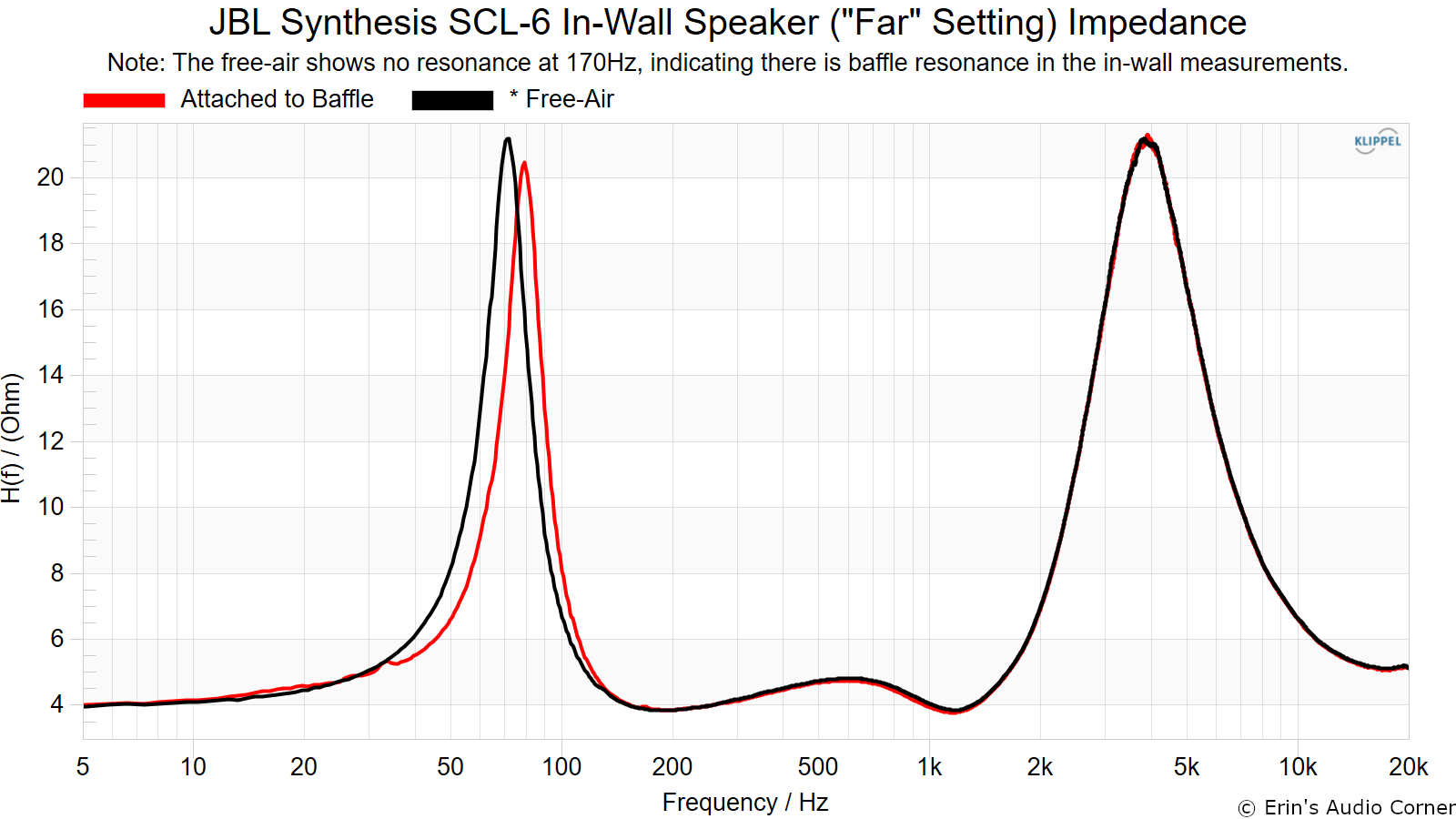
CTA-2034 (SPINORAMA) and Accompanying Data
Measurements are provided in a format in accordance with the Standard Method of Measurement for In-Home Loudspeakers (ANSI/CTA-2034-A R-2020). For more information, please see this link.
CTA-2034 / SPINORAMA:
The On-axis Frequency Response (0°) is the universal starting point and in many situations it is a fair representation of the first sound to arrive at a listener’s ears.
The Listening Window is a spatial average of the nine amplitude responses in the ±10º vertical and ±30º horizontal angular range. This encompasses those listeners who sit within a typical home theater audience, as well as those who disregard the normal rules when listening alone.
The Early Reflections curve is an estimate of all single-bounce, first-reflections, in a typical listening room.
Sound Power represents all of the sounds arriving at the listening position after any number of reflections from any direction. It is the weighted rms average of all 70 measurements, with individual measurements weighted according to the portion of the spherical surface that they represent.
Sound Power Directivity Index (SPDI): In this standard the SPDI is defined as the difference between the listening window curve and the sound power curve.
Early Reflections Directivity Index (EPDI): is defined as the difference between the listening window curve and the early reflections curve. In small rooms, early reflections figure prominently in what is measured and heard in the room so this curve may provide insights into potential sound quality.
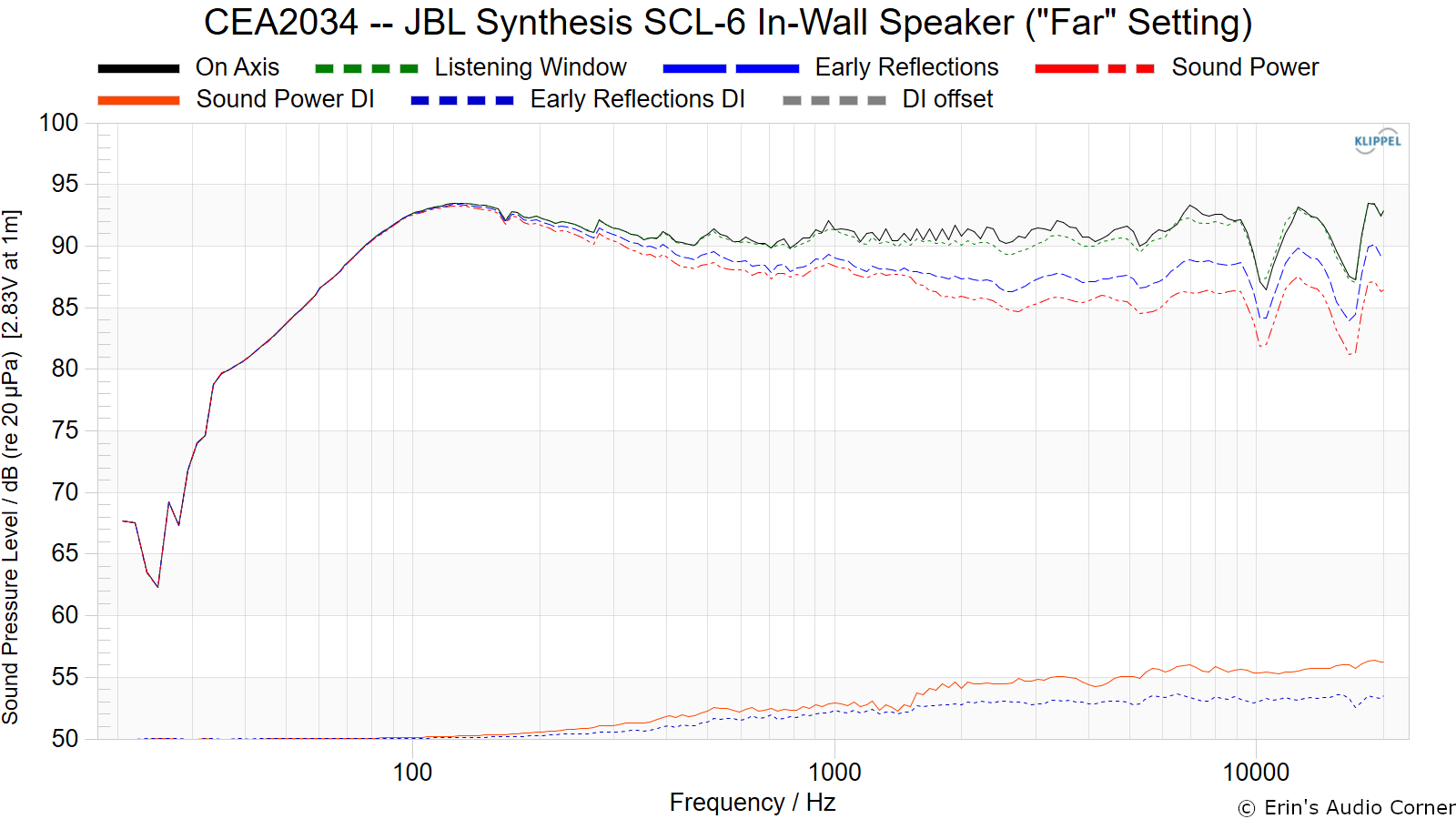
Early Reflections Breakout:
Floor bounce: average of 20º, 30º, 40º down
Ceiling bounce: average of 40º, 50º, 60º up
Front wall bounce: average of 0º, ± 10º, ± 20º, ± 30º horizontal
Side wall bounces: average of ± 40º, ± 50º, ± 60º, ± 70º, ± 80º horizontal
Rear wall bounces: average of 180º, ± 90º horizontal

Estimated In-Room Response:
In theory, with complete 360-degree anechoic data on a loudspeaker and sufficient acoustical and geometrical data on the listening room and its layout it would be possible to estimate with good precision what would be measured by an omnidirectional microphone located in the listening area of that room. By making some simplifying assumptions about the listening space, the data set described above permits a usefully accurate preview of how a given loudspeaker might perform in a typical domestic listening room. Obviously, there are no guarantees, because individual rooms can be acoustically aberrant. Sometimes rooms are excessively reflective (“live”) as happens in certain hot, humid climates, with certain styles of interior décor and in under-furnished rooms. Sometimes rooms are excessively “dead” as in other styles of décor and in some custom home theaters where acoustical treatment has been used excessively. This form of post processing is offered only as an estimate of what might happen in a domestic living space with carpet on the floor and a “normal” amount of seating, drapes and cabinetry.
For these limited circumstances it has been found that a usefully accurate Predicted In-Room (PIR) amplitude response, also known as a “room curve” is obtained by a weighted average consisting of 12 % listening window, 44 % early reflections and 44 % sound power. At very high frequencies errors can creep in because of excessive absorption, microphone directivity, and room geometry. These discrepancies are not considered to be of great importance.

Horizontal Frequency Response (0° to ±90°):

Vertical Frequency Response (0° to ±40°):

Horizontal Contour Plot (normalized):
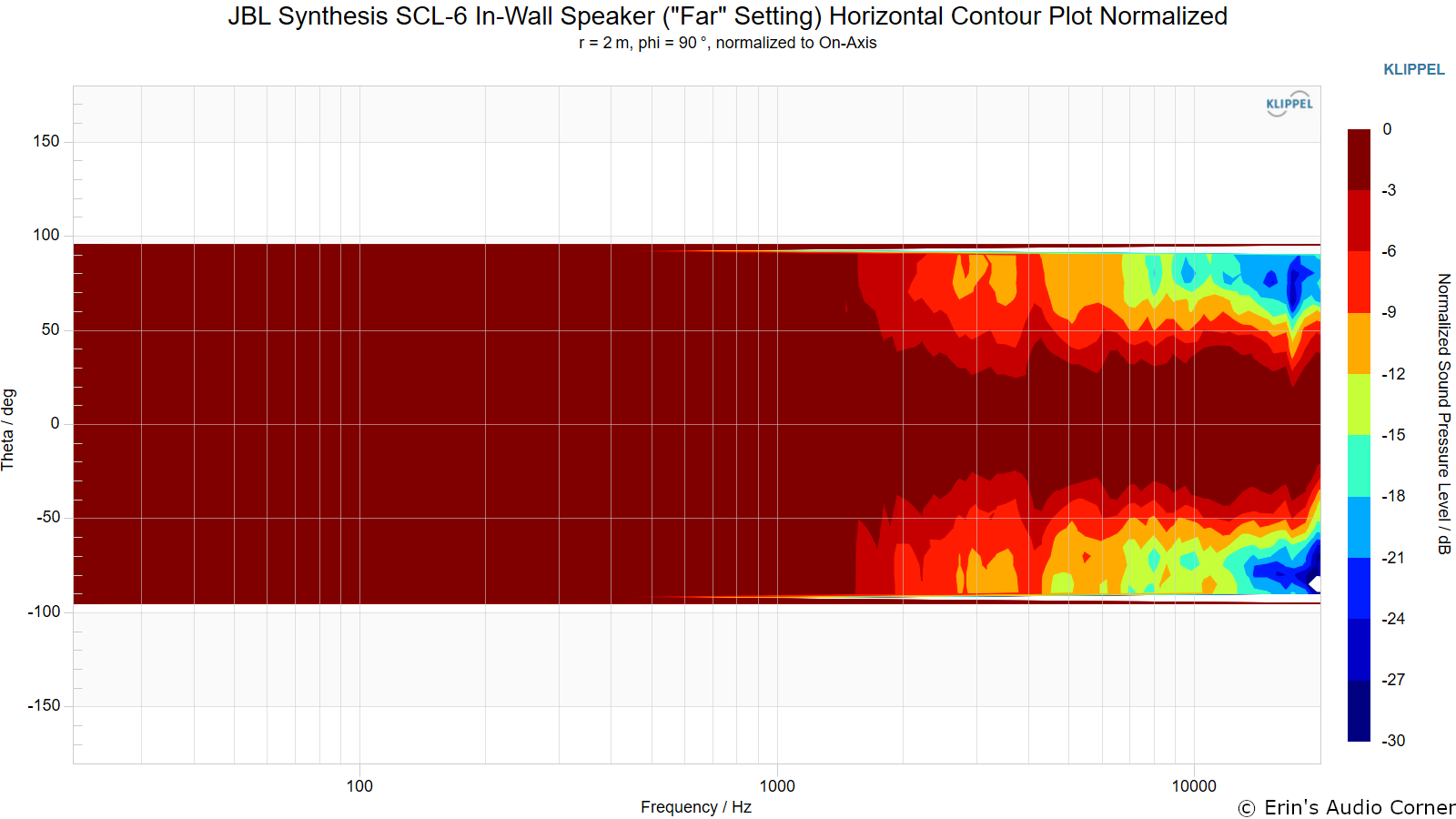
Vertical Contour Plot (normalized):
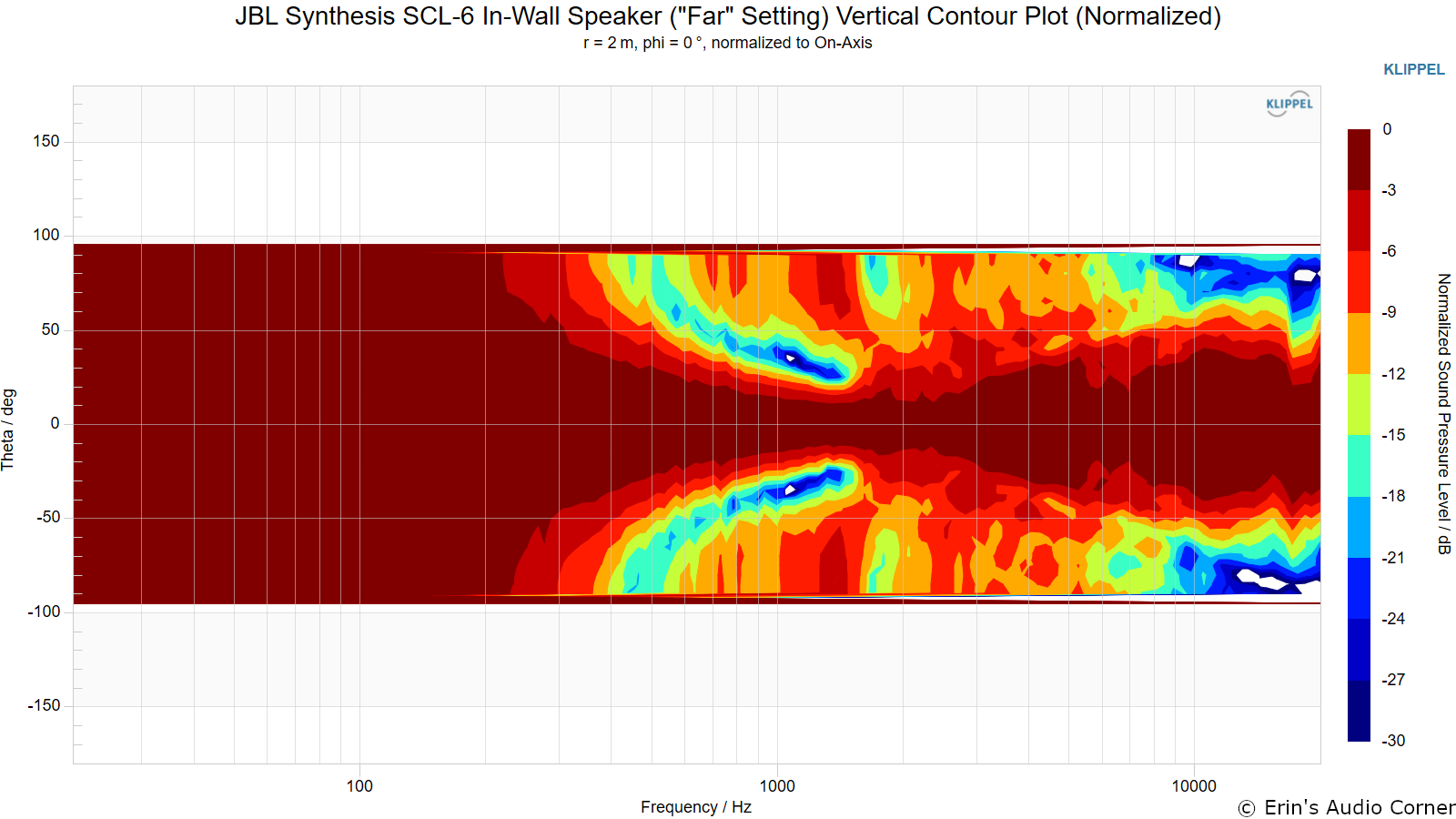
“Globe” Plots
Horizontal Polar (Globe) Plot:
This represents the sound field at 2 meters - above 200Hz - per the legend in the upper left.
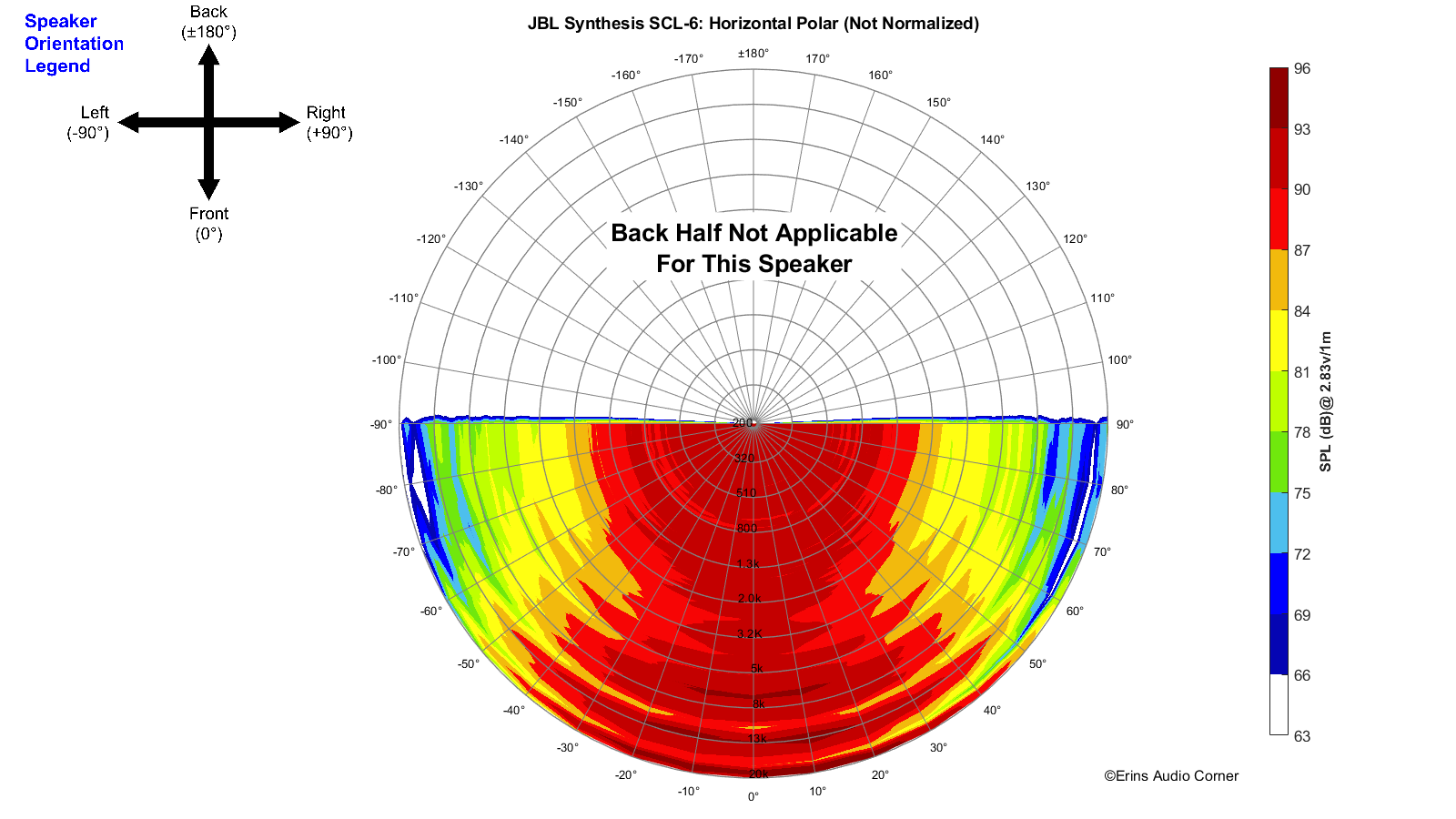
Vertical Polar (Globe) Plot:
This represents the sound field at 2 meters - above 200Hz - per the legend in the upper left.

Additional Measurements
Impedance Magnitude and Phase

Step Response
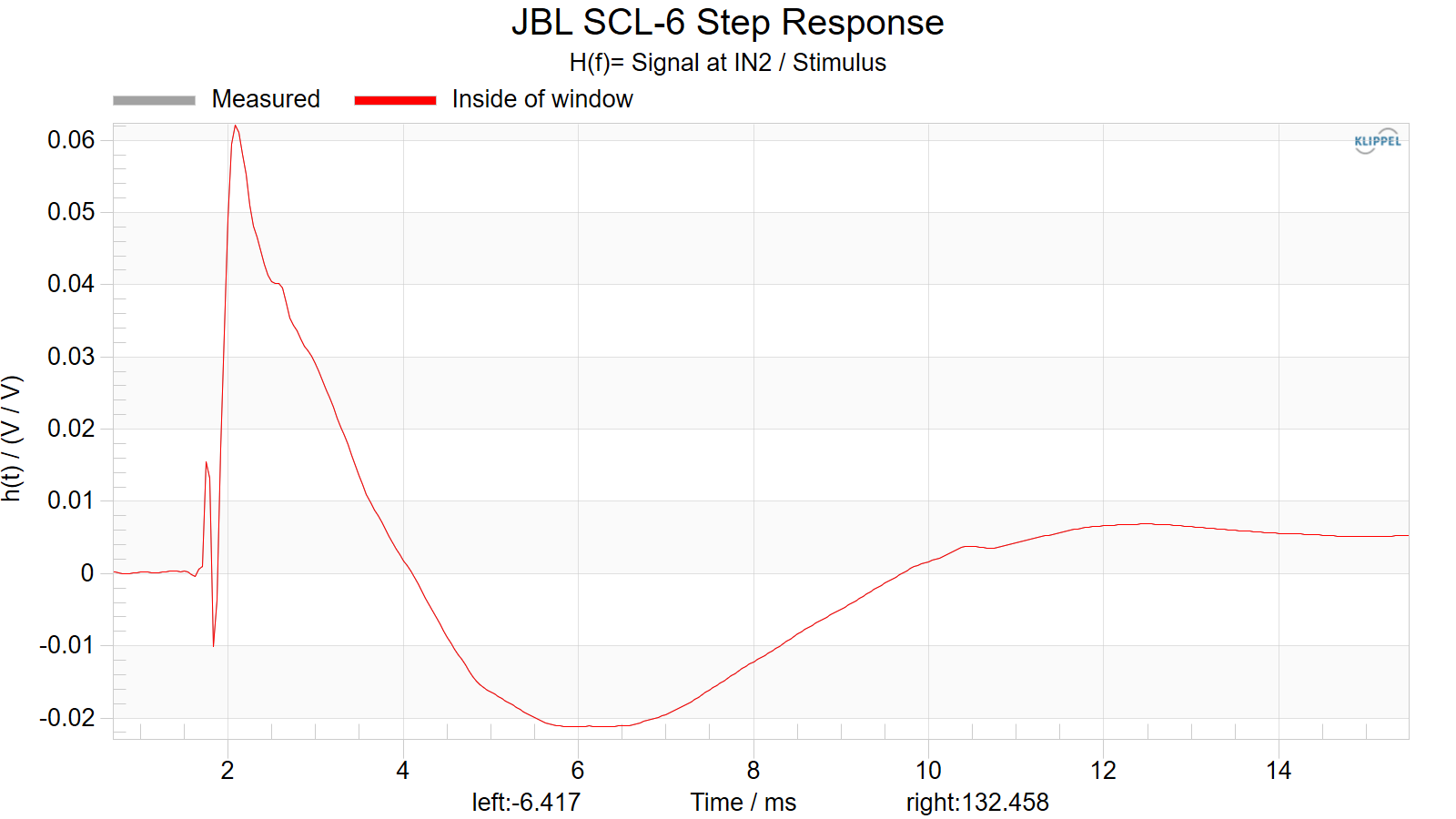
Group Delay
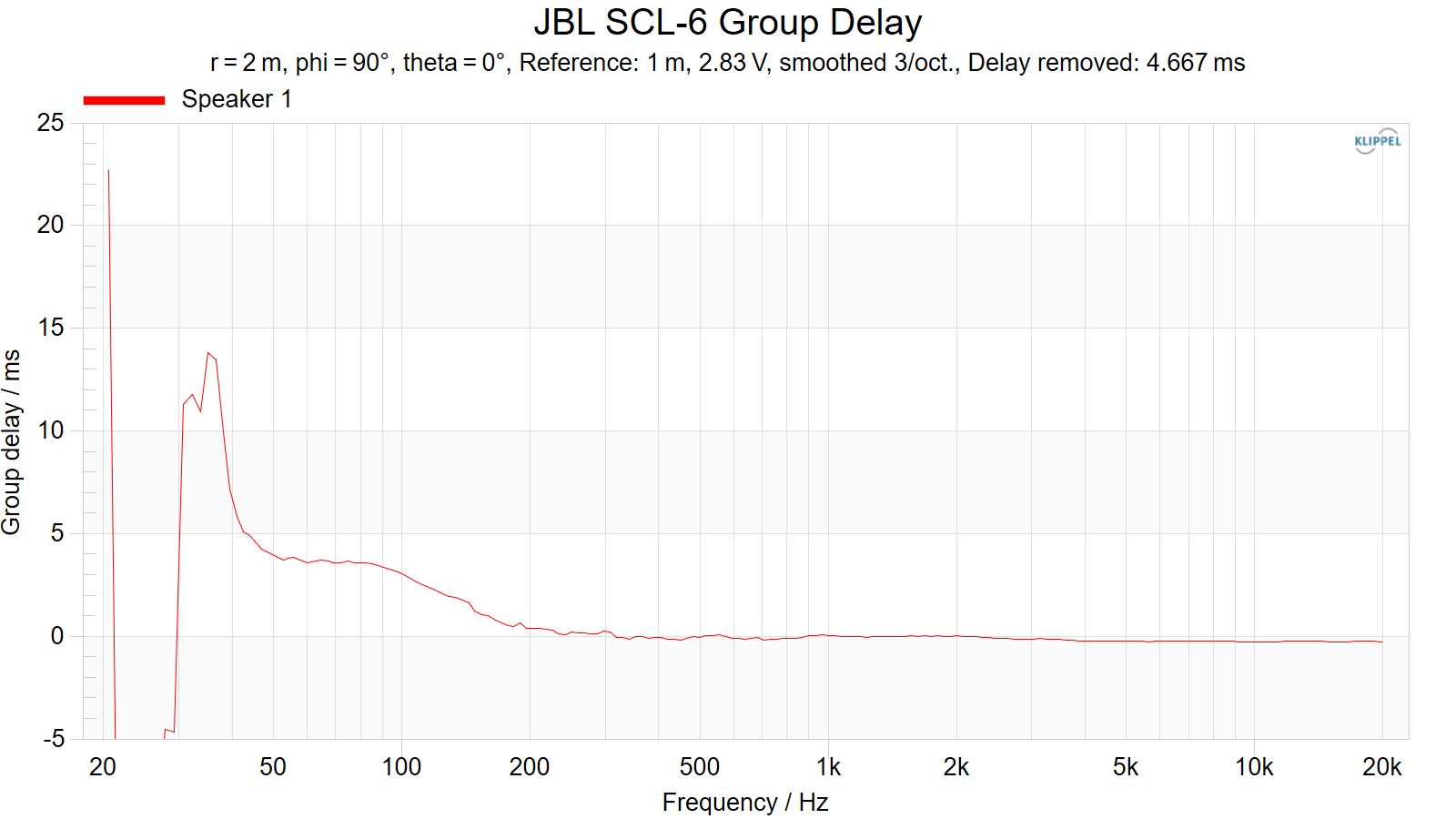
Harmonic Distortion
Harmonic Distortion at 86dB @ 1m:

Harmonic Distortion at 96dB @ 1m:
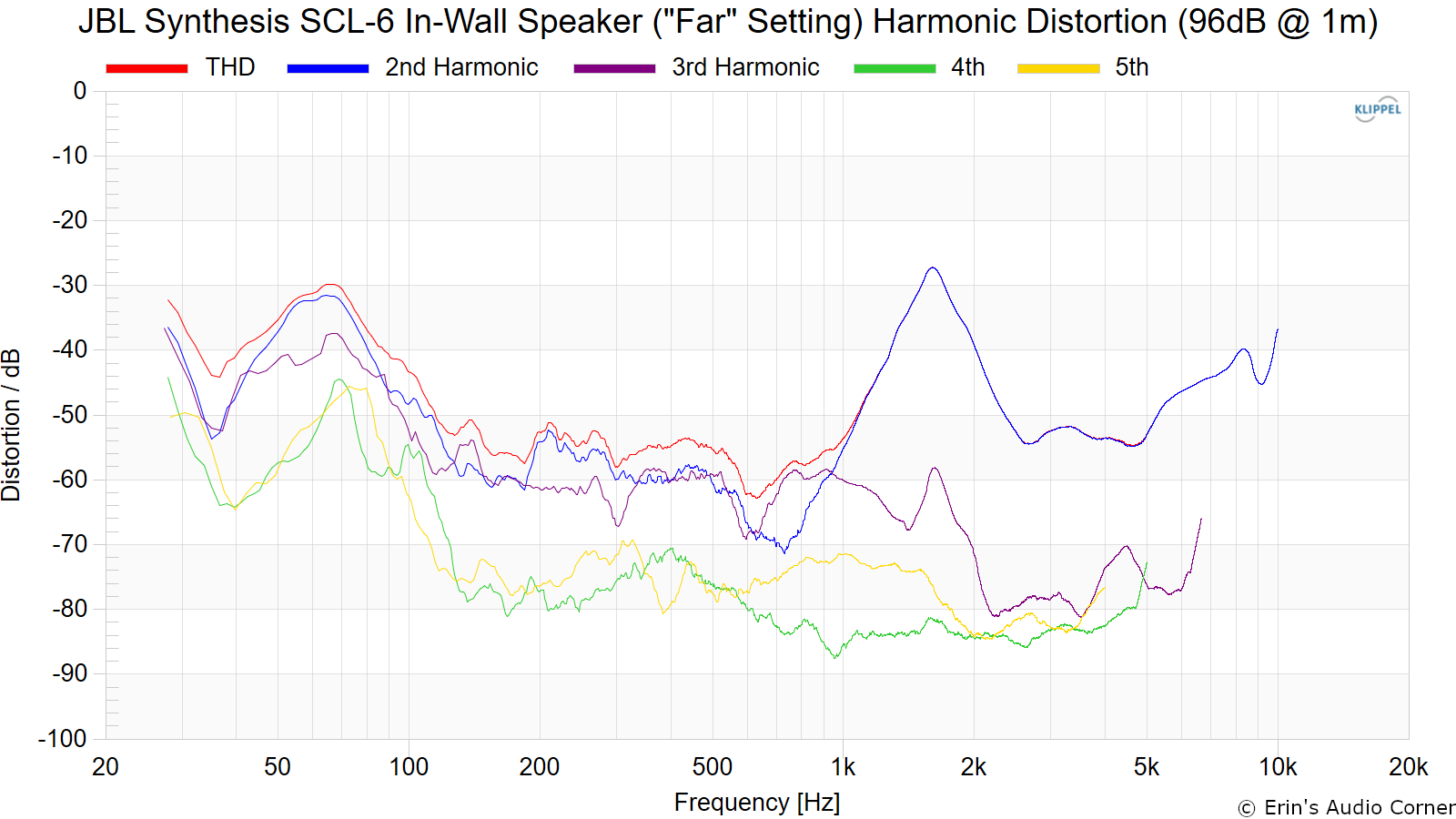
Dynamic Range (Instantaneous Compression Test)
The below graphic indicates just how much SPL is lost (compression) or gained (enhancement; usually due to distortion) when the speaker is played at higher output volumes instantly via a 2.7 second logarithmic sine sweep referenced to 76dB at 1 meter. The signals are played consecutively without any additional stimulus applied. Then normalized against the 76dB result.
The tests are conducted in this fashion:
- 76dB at 1 meter (baseline; black)
- 86dB at 1 meter (red)
- 96dB at 1 meter (blue)
- 102dB at 1 meter (purple)
The purpose of this test is to illustrate how much (if at all) the output changes as a speaker’s components temperature increases (i.e., voice coils, crossover components) instantaneously.
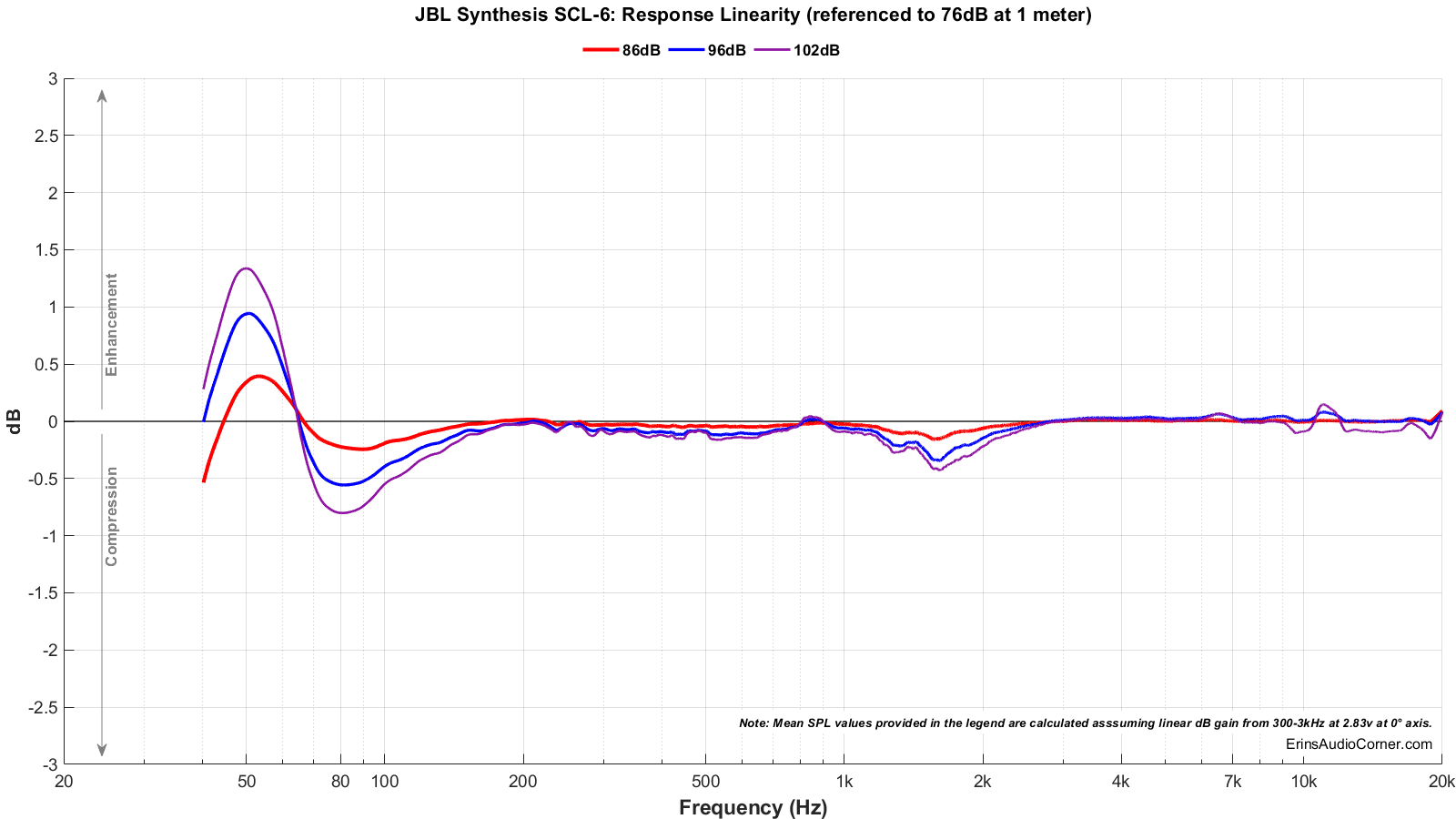
Additional CEA-2034 Measurements
“Far” Boundary setting with the grille ON.
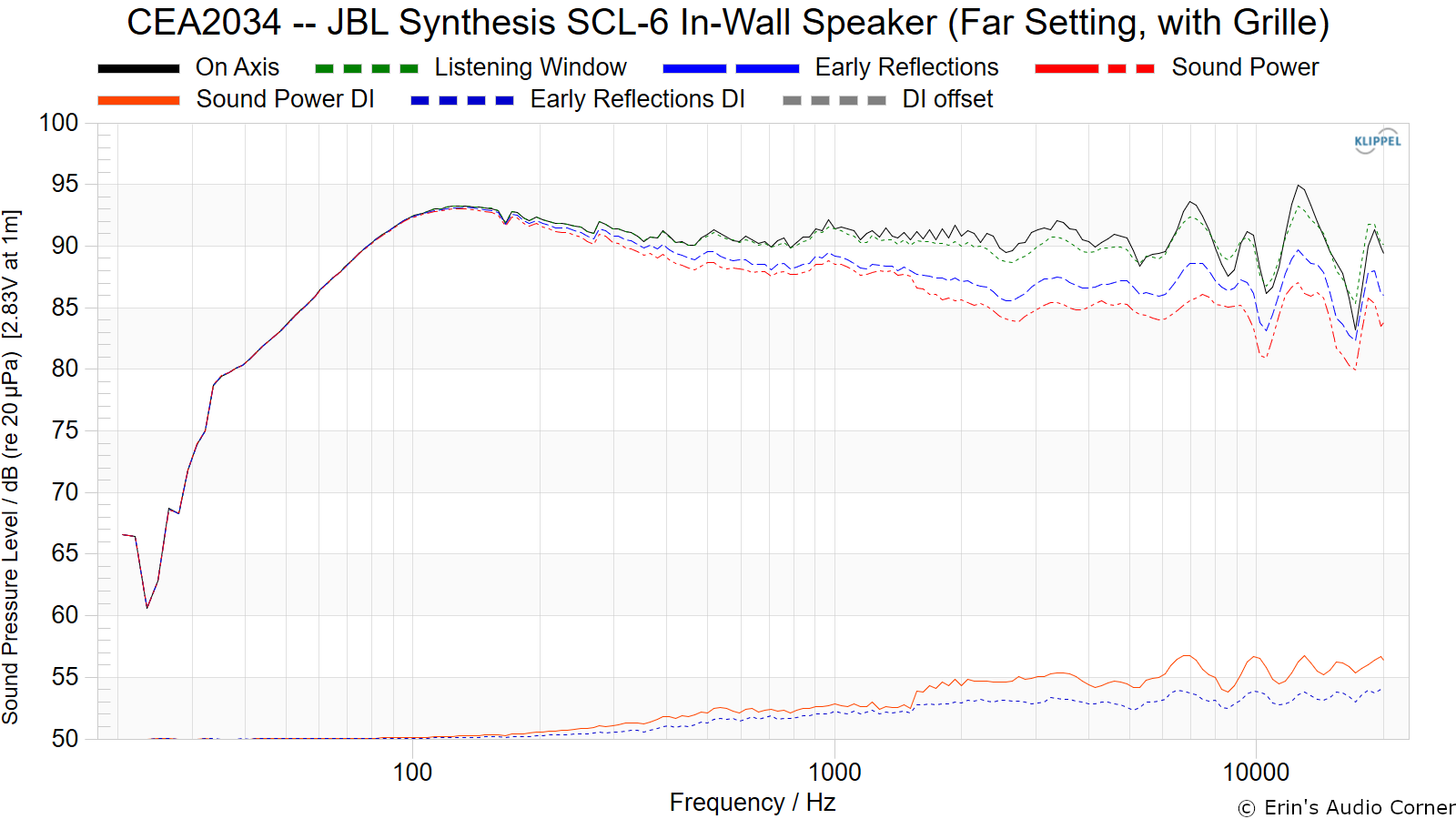
Note: “Near” setting below. Per JBL’s specification:
“When possible, avoid mounting the speaker within 2 ft (0.6m) of a wall. If such placement is unavoidable, set the Boundary Compensation control to the “NEAR” position."
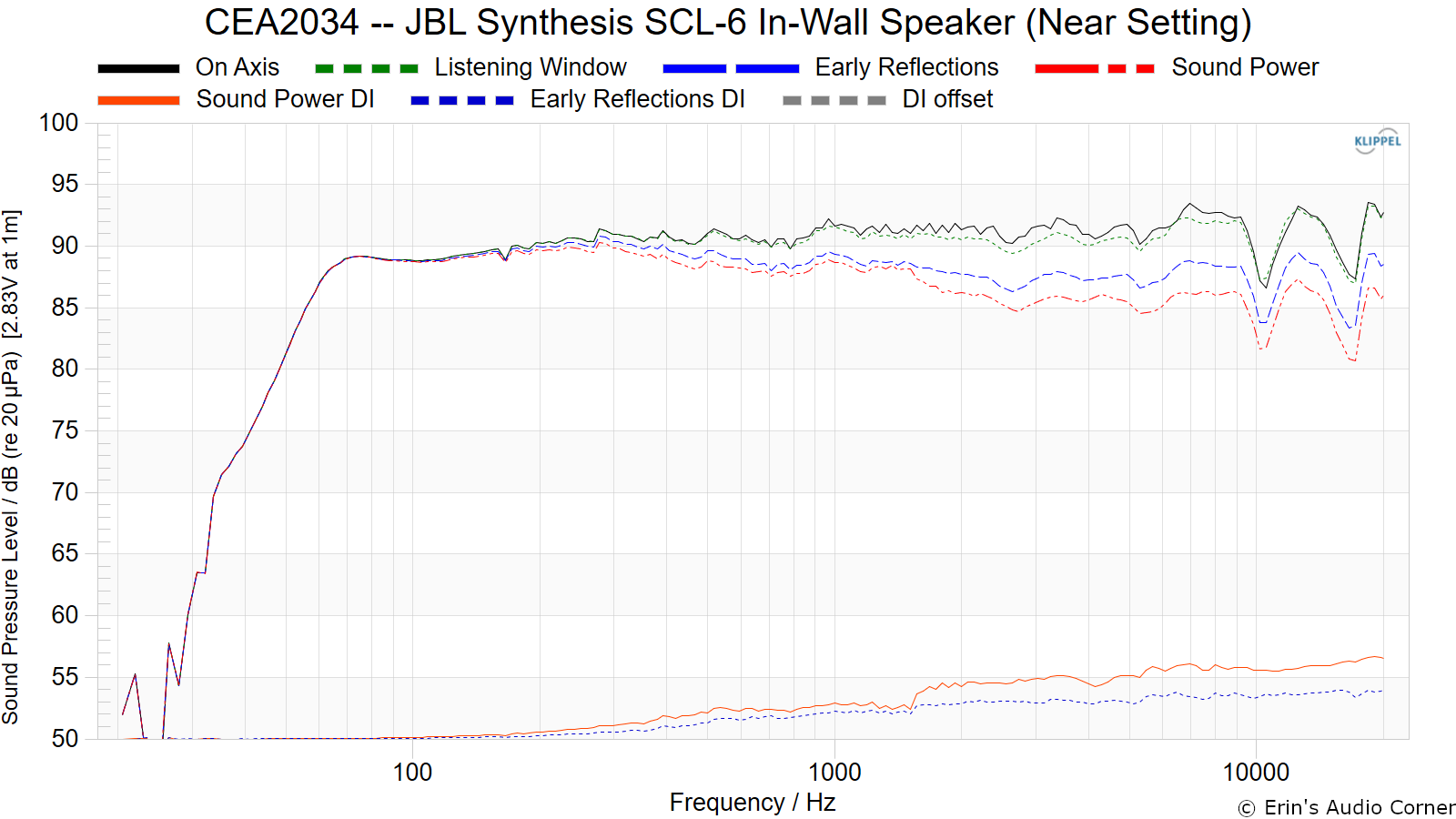
Parting / Random Thoughts
As stated in the Foreword, this written review is purposely a cliff’s notes version. For details about the performance (objectively and subjectively) please watch the YouTube video.
I had some questions about this speaker and was put in touch with the designer, An Nguyen by a mutual friend. Below is the exchange.
Erin: Is there a particular reason that the midbass bump (on the “Far” setting) exists, as opposed to a flatter response? It’s mild and I can assume that most customers would like it. I’m just curious if you might have thoughts to share on this. I see that in the “Near” setting this doesn’t exist.
An Nguyen: The slight mid-bass bump is due interaction between passive crossover components & impedance of the outer pair woofers, but it was also intended to be there to enhance the bass effects for typical small loudspeaker to give it a fuller sound. The “Near” setting is used, when the loudspeaker is installed near wall/corner of room, should result in similar FR as “Far” setting. The “Near” setting reduces on average of 3-4dB from 300 Hz to below to compensate for boundaries effects/gains.
Erin: Yes, the ERDI is excellent! Talk about EQ-ability!
An Nguyen: It is designed to have smooth DI in order to have a consistent soundstage along with EQ-ability for anechoic EQ and/or room EQ.
Erin: I do see that this speaker is really vertical-height dependent and isn’t very forgiving beyond about ±10°. Is this in-line with your suggestion?
An Nguyen: Your assessment is correct. To go beyond +/-10 degree (Ver) would take lower crossover point & larger horn mouth of which are not feasible for this size & configuration.
Erin: The HF peak/dip pattern isn’t new to me wrt waveguide/coaxial designs. The one question I always get is “can you hear that” and, typically, I say no. Certainly not the level that the high-resolution data might indicate. When smoothed, the amplitude is not as prominent. I am curious, though, if you guys have any input or thoughts about this that you might want to pass along for me to mention in my review. Is this a “necessary evil”, design tradeoff for you guys?
An Nguyen: To me the perception of HF from 10k Hz & above is greatly depend on hearing threshold of individual, and I agree with your statement “When smoothed, the amplitude is not as prominent”. Our objective is always to achieve smooth FR through-out the operating bandwidth of the loudspeaker.
Erin: With the constant directivity, the estimated in-room response flattens out which typically results in a “bright” sound, based on my experience. I was wondering if this is part of the design because the assumed use for these will be behind an acoustically transparent screen? (still, I know that the response can be EQ’d thanks to the flat DI)
An Nguyen: The SCL6 is designed for mostly home theater applications & operating behind the screen is also taken in consideration. As you mentioned, the SCL6 is very EQ-able, so the installer could use room EQ to achieve a desired in-room target curve with all things taken in consideration.
That’s it for the written review.
Support the Cause
If you find this review helpful and want to help support the cause there are a few ways you can do so below. Your support helps me pay for new items to test, hardware, miscellaneous items needed for testing and costs of the site’s server space and bandwidth. Any help is very much appreciated.
Join my Patreon: Become a Patron!
Or using my generic Audio Advice affiliate banner below to buy anything they sell that you want to try out. This will earn me a small commission at no additional cost to you.
You can also join my Facebook and YouTube pages if you’d like to follow along with updates.
